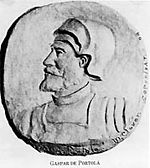Buckhorn, Ventura County, California
Buckhorn is a populated place name along State Route 126 in a rural unincorporated area of Ventura County, California, United States. Buckhorn is about 2 miles (3.2 km) outside the town of Piru but is within the eponymous census-designated place. Located in the Santa Clara River Valley, this was an early stagecoach stop and a regular eating place known for being midway between Los Angeles and Santa Barbara. It was run by the Warring family who came to the county in 1869 and owned the nearby Buckhorn Ranch. Buckhorn was also a station on the initial route of the coast rail line that arrived in the valley in 1887. With the completion of the Santa Susana Tunnel in 1904, the route through Oxnard and Simi Valley became the most direct route between Los Angeles and San Francisco. The shipping of agricultural products such as citrus continued to keep this route busy for many years. The Santa Paula Branch Line no longer connects through to Santa Clarita after the rails were washed out. The junction with the main line is near the East Ventura station (Metrolink ).
Excerpt from the Wikipedia article Buckhorn, Ventura County, California (License: CC BY-SA 3.0, Authors).Buckhorn, Ventura County, California
East Telegraph Road,
Geographical coordinates (GPS) Address Nearby Places Show on map
Geographical coordinates (GPS)
| Latitude | Longitude |
|---|---|
| N 34.400833333333 ° | E -118.81555555556 ° |
Address
East Telegraph Road
East Telegraph Road
California, United States
Open on Google Maps









